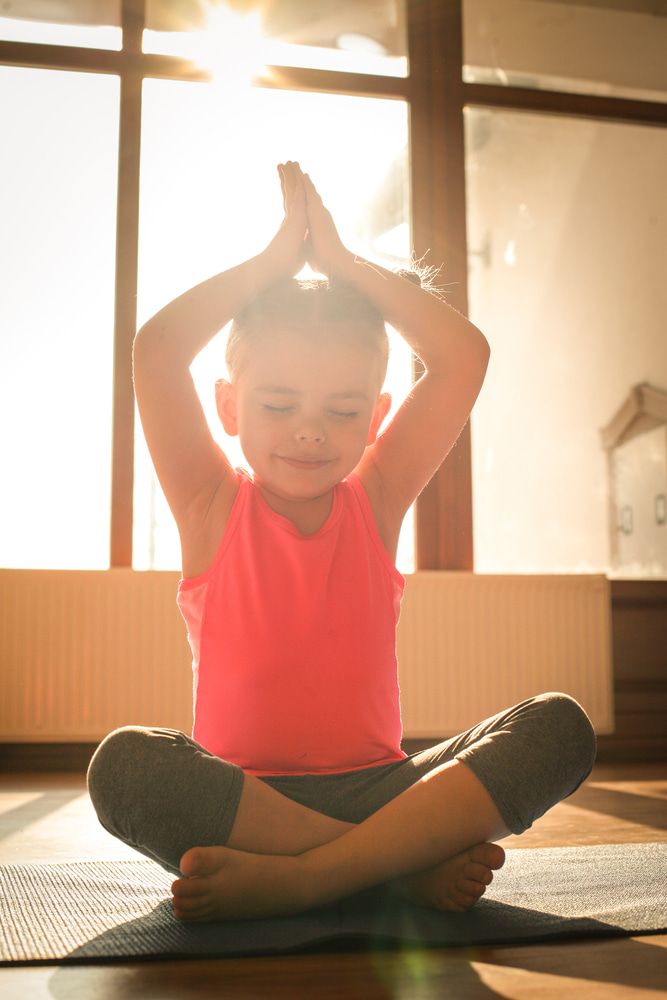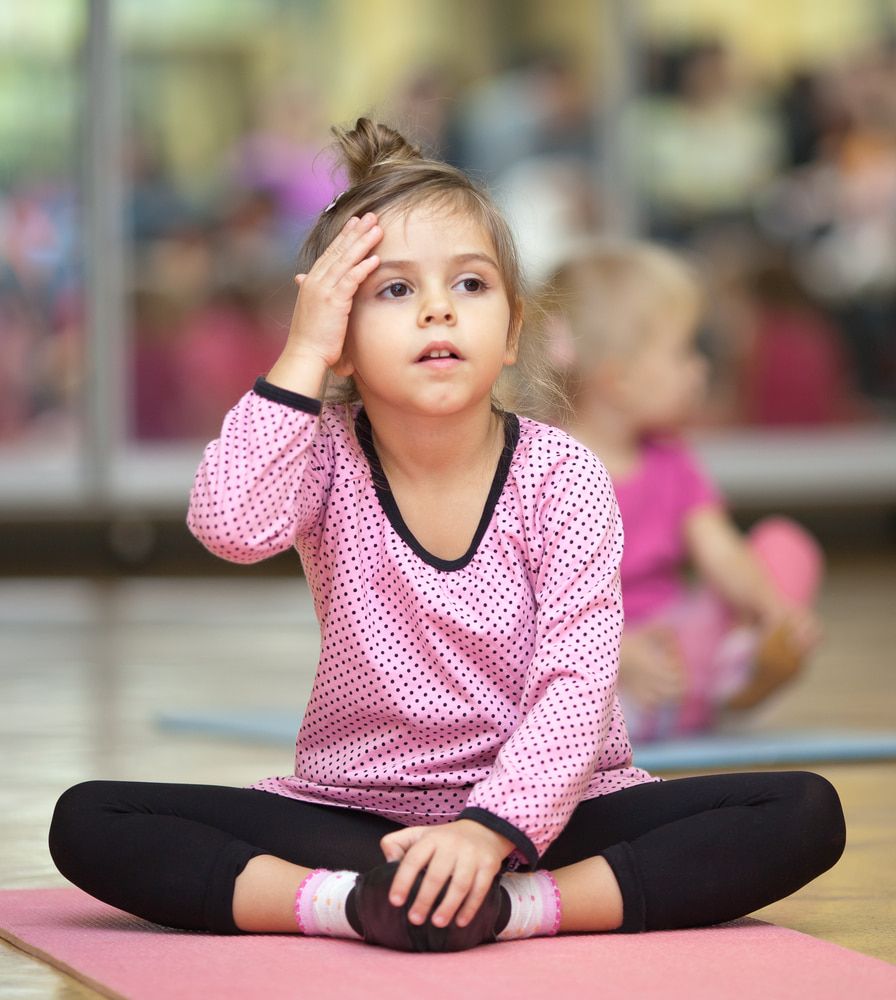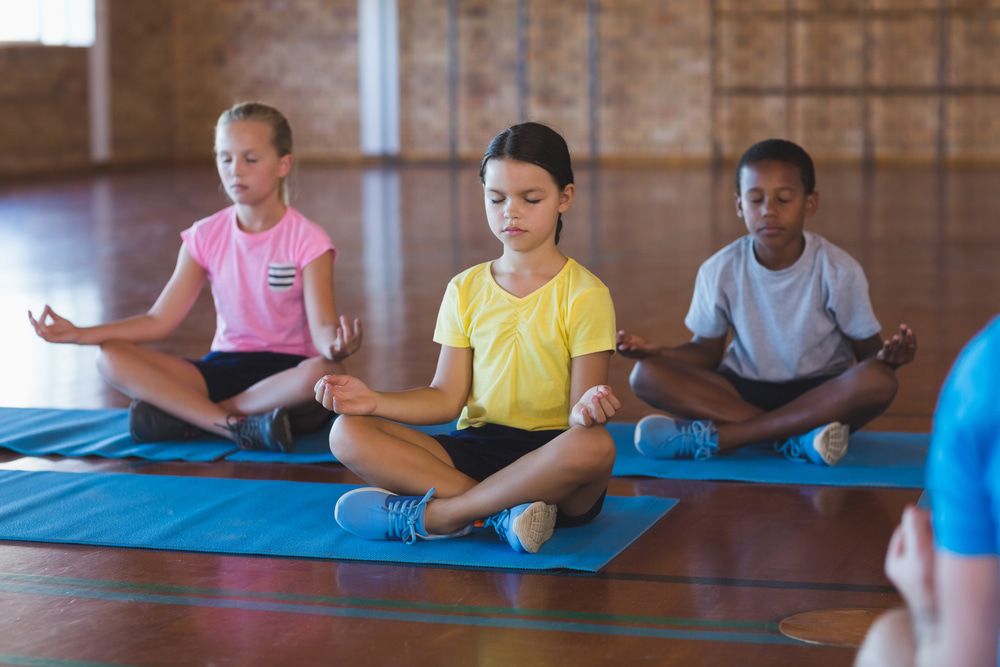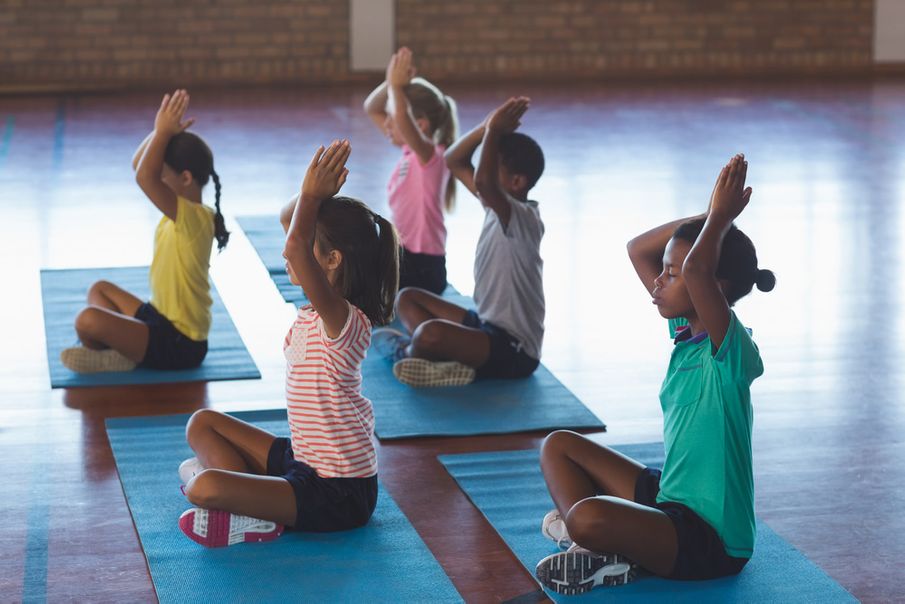Whether you were a cross-country pro, or dreaded the thought of PE with a passion, ways to engage kids in exercise are changing, and yoga might just be the key to unlocking their wellbeing potential
For many, the thought of exercising at school brings back memories of dodging basketballs, risking burns to climb ropes, and running around muddy fields in the rain.
Things are beginning to change, though – and it’s not just about leaping around in a stale-smelling sports hall. Increasingly, schools are recognising the benefits of yoga to help improve children’s health, wellbeing and focus – and introducing the mindful practice to the classroom as part of the PE curriculum, or as a lunchtime or after-school club.
Yoga, a form of exercise which focuses on strength, flexibility, balance and breathing, is known to boost physical and mental wellbeing – but studies have shown it has the potential to benefit children in lots of different ways.
Research published in 2014 by the University of Massachusetts found that after just 10 weeks of classroom yoga, primary school children showed improvements in social interactions, attention span, academic performance, self-esteem, and their ability to deal with stress and anxiety.
Trish Munro is the founder of The Yoga Factory, training teachers to deliver an exercise programme called Yoga for Schools to children, which combines yoga moves with learning health facts about the body.

So far, more than 4,000 teachers have been trained to deliver the programme, bringing yoga to half a million British kids.
“Yoga means to unite mind and body, so as well as exercising your body, you are calming the mind,” she says. “During the formative years of a child, it is important to build self-esteem, self-awareness, and strengthen the mind and body.
“Yoga teaches children about how their bodies work, and from this they can begin to understand how important it is for them to look after their bodies, and nurture themselves.”
Yoga for fun
Crucially, though, it’s also fun – learning to balance in different poses is a welcome distraction from reciting multiplication tables.
Liz Neale, from Brighton, is mum to two daughters – Hannah, aged five, and Catherine, who is seven. Her youngest recently started attending an after-school yoga club called WiggleKids, which she loves.

“It costs £1 a session so it’s a very nominal amount – it’s subsidised by the PTA because the school parents feel it’s really important that all children should be able to afford the fun stuff,” Liz says.
“Hannah loves wildlife and nature, so it’s really captured her imagination through doing some of the animal poses. One week she came home with a bottle of bubbles that her WiggleKids yoga teacher Jo Yates had given them, and Hannah was showing us how to 'do good breathing’, in her words!
“I’ve definitely noticed that Hannah seems calmer and more chilled out when I collect her from yoga,” Liz adds.
Stress and anxiety
We might laugh at the concept of learning to breathe properly, but it actually has a huge impact on how we feel, Trish explains.
“Children naturally breathe correctly, but by the time we are teenagers and adults, our breathing becomes shallower – especially if we are anxious or depressed. By slowing down our breathing and breathing more deeply, in just one minute we can get rid of tension in the body,” she says.
With around one in 10 children affected by mental health problems, learning how to deal with stress and anxiety is crucial.
Children are being subjected to standardised school tests at an increasingly young age – which both parents and teachers say is taking a toll on their wellbeing. Last year, the government announced plans to test four-year-olds in their first few weeks of school.
According to a survey by the UK children’s charity Barnado’s published last year, nearly half of all schoolchildren aged 12 to 16 in England feel sad or anxious at least once a week, due to school, thoughts about their future, problems at home, their appearance, or bullying.

By introducing yoga to children at an early age, it is hoped they will learn the skills to lower their stress levels before they become overwhelmed.
A number of studies have shown yoga can be an effective tool to help people deal with anxiety. In 2014, academics from Manchester and Newcastle Universities found that yoga can help reduce the risk of pregnant women developing anxiety or depression. Stress during pregnancy, the research suggested, has been linked to increased behavioural problems in the child as a toddler and adolescent, as well as later mental health problems in the mother.
“In regards to stress, yoga is an incredible tool to use,” Trish says. “On my course, I show teachers how to use a simple breathing technique leading up to exams to keep stress levels under control. If a child is calm before sitting a test, they will perform much better.
In the long-term, she adds, it teaches children the skill to “stay in the moment” and not to be concerned about the past or future. It also promotes relaxation and triggers the release of endorphins – chemicals in the brain which boost our mood.
Improving focus
It’s not just physical and mental health that gets a boost from yoga, since practising it can help improve our concentration and ability to focus too. A 2013 study, published in the Journal of Physical Activity and Health, found people who did 20 minutes of yoga were able to process and learn information more quickly and accurately.
“Children with attention problems struggle with focusing and concentration. Balance plays a key part in helping them to manage their condition,” Trish says. “To balance, you must maintain focus, and this teaches them the basis of concentration, which they can then transfer to the classroom and other activities.”
Additionally, she explains, the breathing exercises and mindfulness act on the part of our brain that keeps our thoughts in check – the prefrontal cortex.
“The most fundamental problem for children with attention deficit hyperactivity disorder (ADHD) and associated conditions is the ability to pause and reflect before acting on impulse,” Trish says. “When they begin to notice that they feel calmer after a yoga session, then the basis of managing their condition begins.”

Benefits for all
Research has shown that yoga has the potential to benefit children on the autism spectrum, too – with a 2012 study showing autistic children who took part in a daily yoga programme at school showed improvements in their behaviour.
Researchers suggested this is, in part, because yoga helps to reduce anxiety and promote calm, while the programme helped to boost communication and socialisation.
“Yoga enhances focus, directs attention, and heightens our sense of control. Holding a tree pose, for instance, is incredibly effective in helping autistic children focus and develop their attention,” Trish says. “With their feet firmly planted on the ground and their mind focused on breathing, it is much easier to feel a sense of control over themselves and of their surroundings.”
Aerobic exercise such as running, jumping and skipping is still a crucial part of the school curriculum, so it’s not the end of PE as we know it. But introducing yoga to classrooms as an additional exercise can have enormous benefits for all children – on their health, mental wellbeing and, importantly, their happiness.
“A happy child does well at school, and goes on to be a valuable member of society. Ultimately, we all want to be happy, and yoga helps us to create the conditions for happiness to surface,” Trish says.
You can find out more about Trish Munro’s classroom yoga services at TheYogaFactory.co.uk, or to find our more about yoga therapy, visit Therapy Directory.


Comments